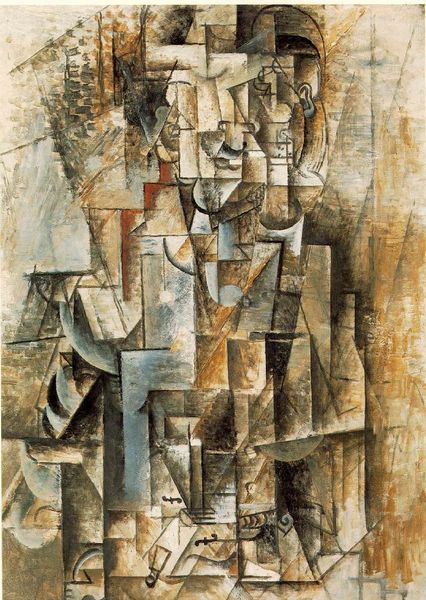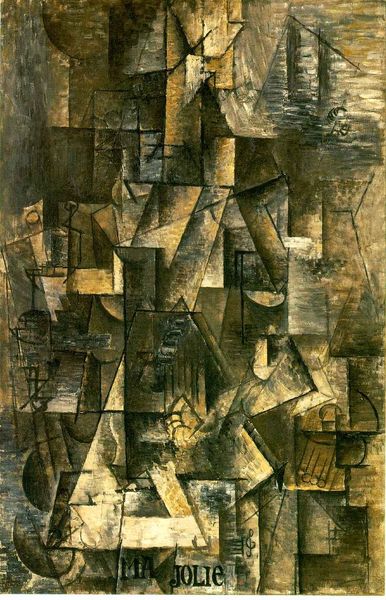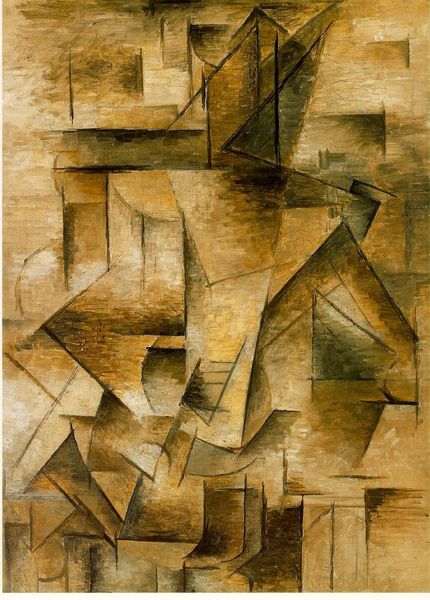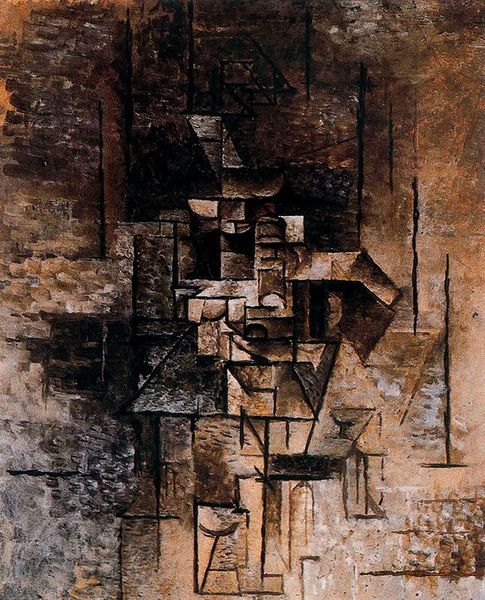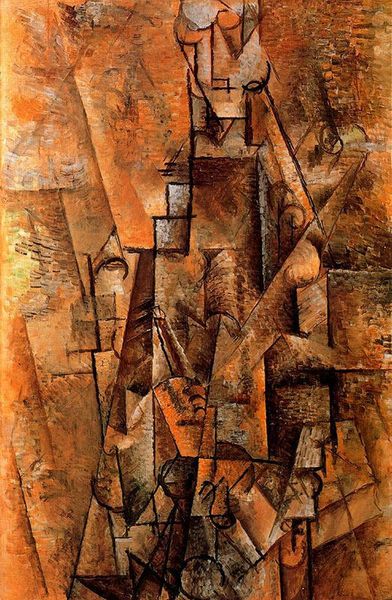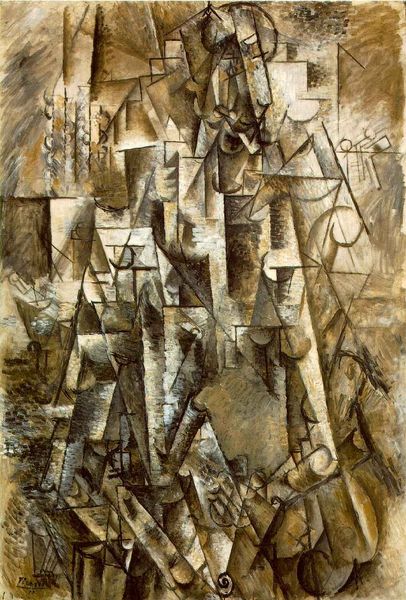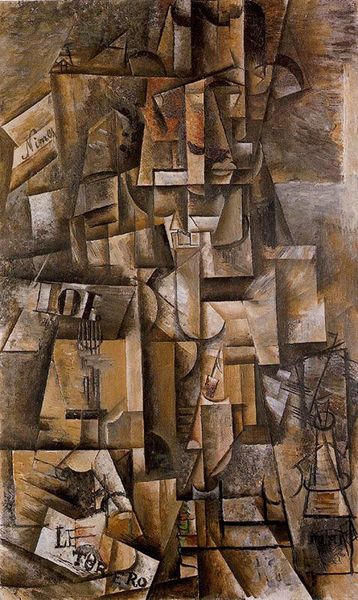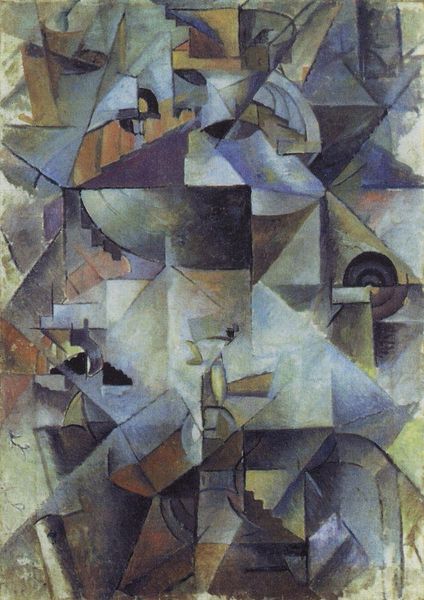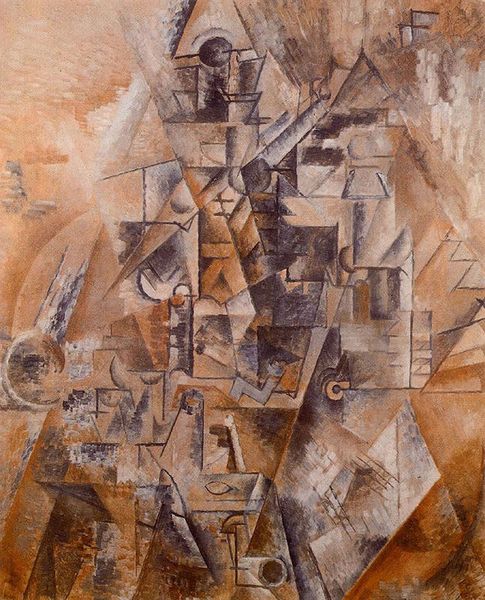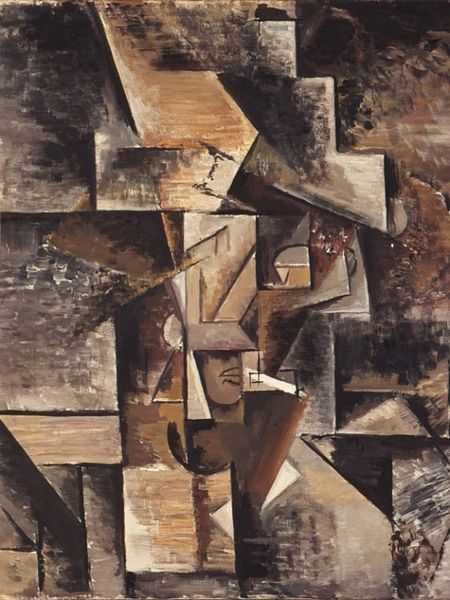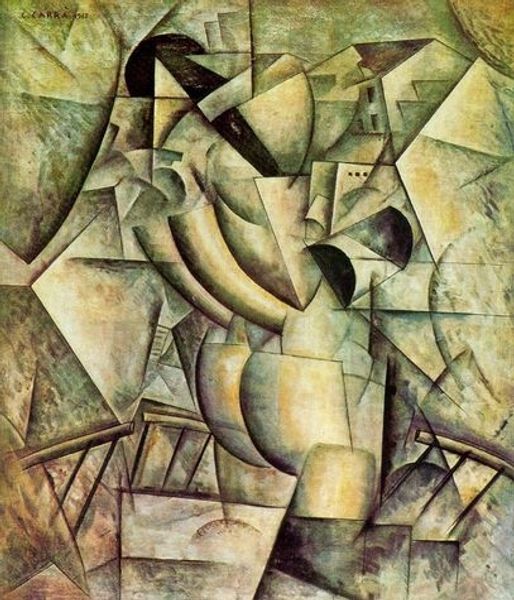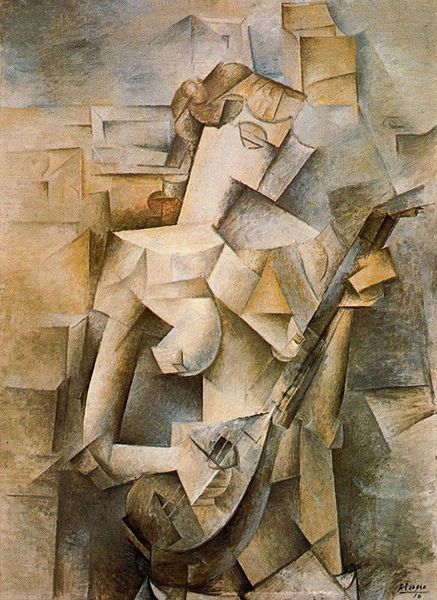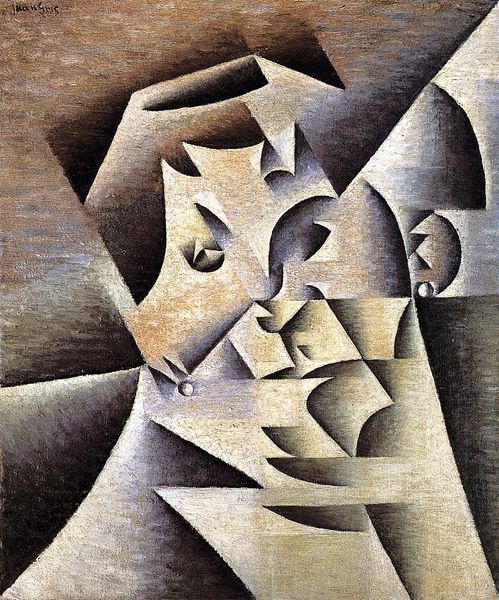
painting, oil-paint
#
portrait
#
cubism
#
painting
#
oil-paint
#
oil painting
#
famous-people
#
male-portraits
#
history-painting
#
modernism
Dimensions: 100.5 x 73 cm
Copyright: Public domain US
Editor: This is Picasso's "Portrait of Daniel-Henry Kahnweiler," painted in 1910, using oil on canvas. It's hard to make out at first, but I see shapes and forms... a person almost hidden within the fractured planes. How do you approach a piece like this? Curator: We must consider the radical shift Picasso embodies. Here, he isn't simply depicting Kahnweiler; he's constructing a representation through the language of Cubism. Look closely at the materials – oil paint, canvas. These aren't passive surfaces; they are active participants in the process of deconstruction and reassembly. How does the grid-like structure reflect the industrialized world and the changing nature of perception itself? Editor: I see the grid you’re talking about! I hadn't considered it reflecting industrialization... So the *process* of making it becomes a commentary? Curator: Precisely! Cubism dismantles traditional perspective, mirroring the fragmentation and instability of the modern experience. Think about the labour involved – the painstaking layering of paint, the intellectual effort of breaking down and reassembling form. What is being produced is more than just a portrait; it’s an intellectual product born out of new social and material conditions. What does Kahnweiler represent in this new world? Editor: I see it! He's not just a man, but an embodiment of a changing world viewed through Picasso’s evolving artistic labor. It’s like… Kahnweiler's identity becomes a manufactured concept too, built piece by piece. Curator: Exactly. By scrutinizing the production of this artwork, from the extraction of pigments to the final brushstroke, we unveil a rich tapestry of meaning woven into the fabric of modern life. How is this reflected back on the labor of the viewer engaging with a Cubist painting, piecing the portrait back together for themselves? Editor: That really changes how I see it. I appreciate learning to look past the subject and think about how art reflects the materials, making, and also how we as consumers complete the cycle.
Comments
No comments
Be the first to comment and join the conversation on the ultimate creative platform.
